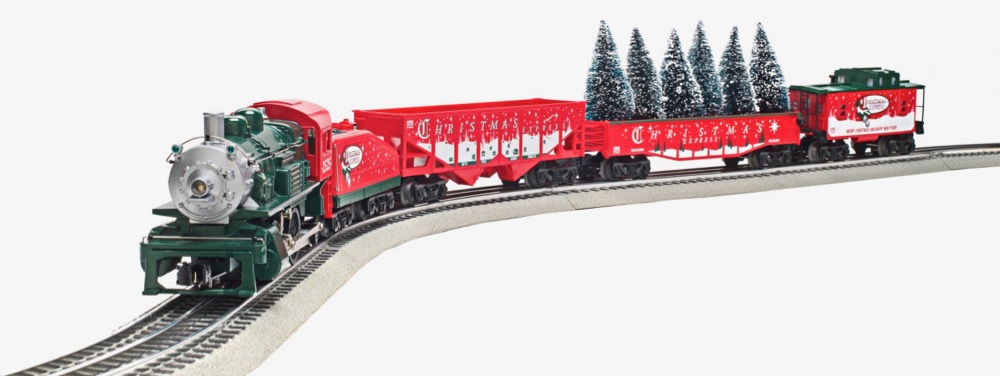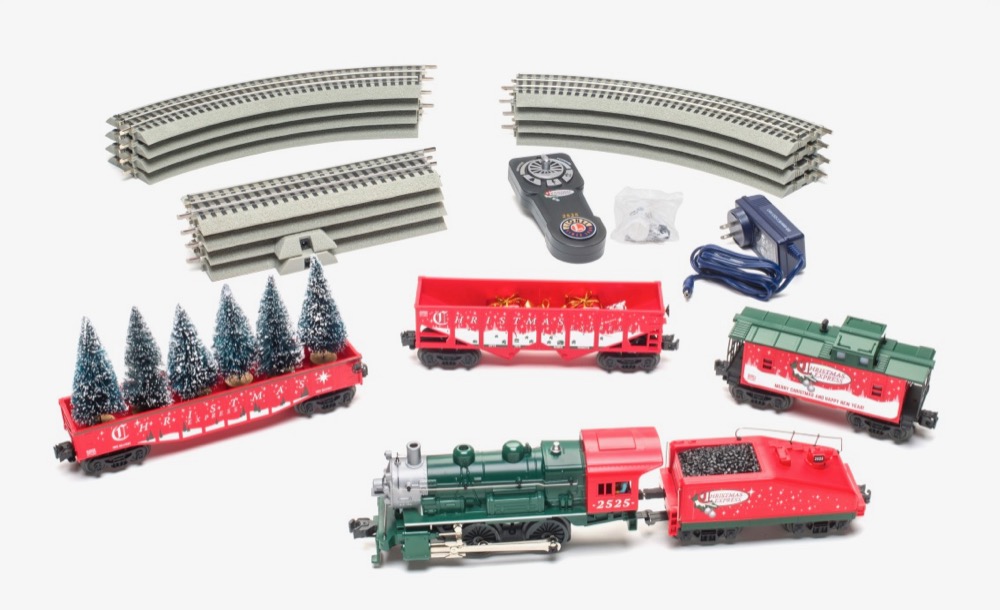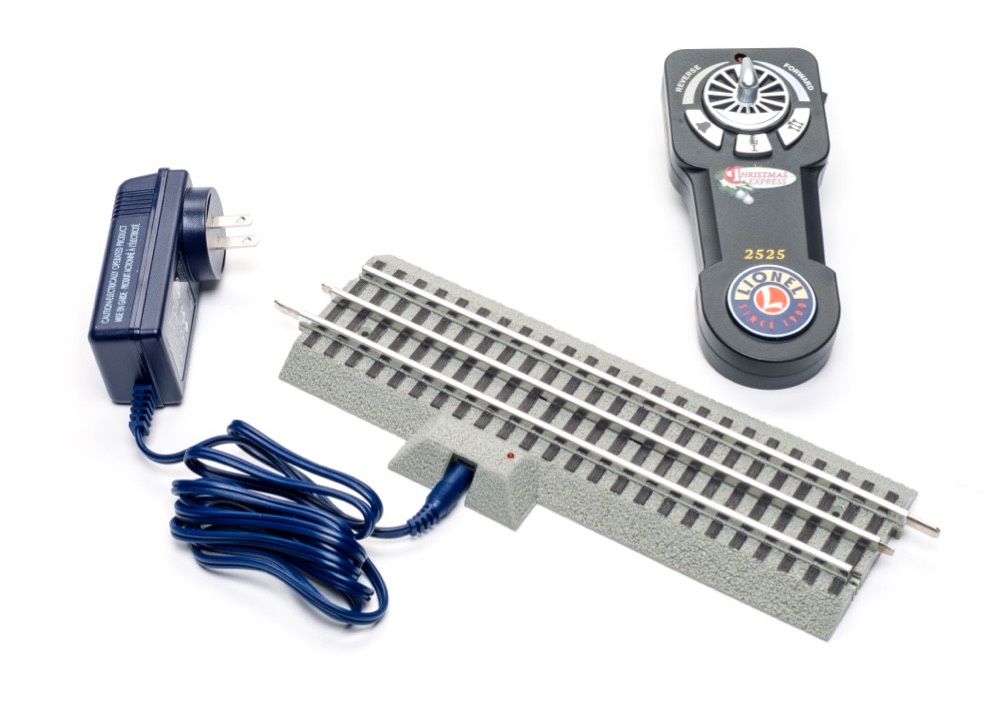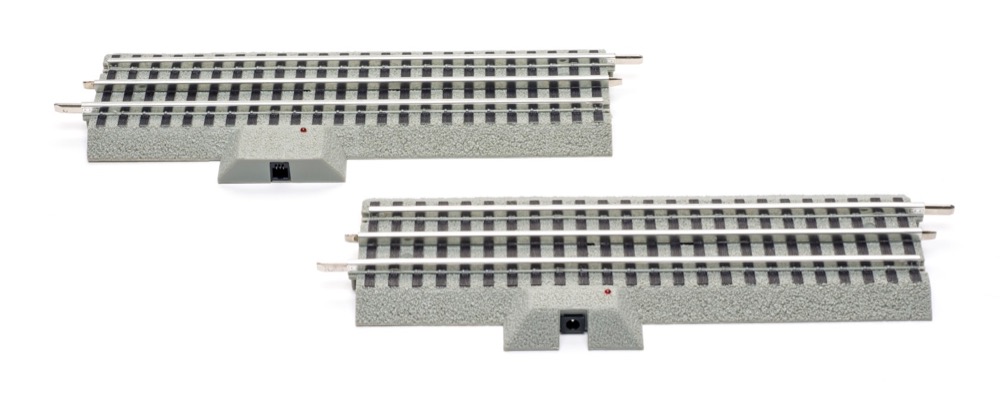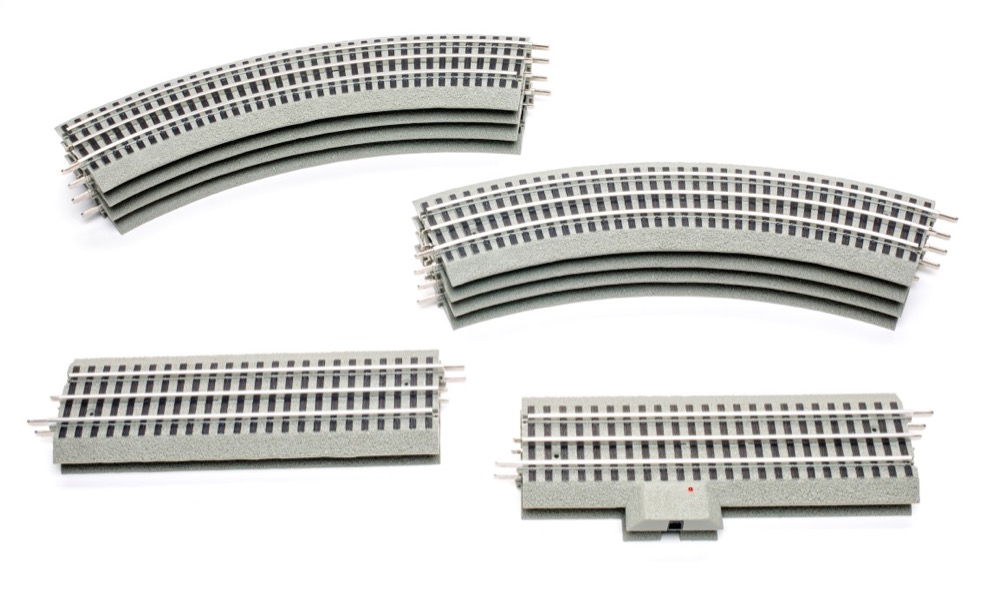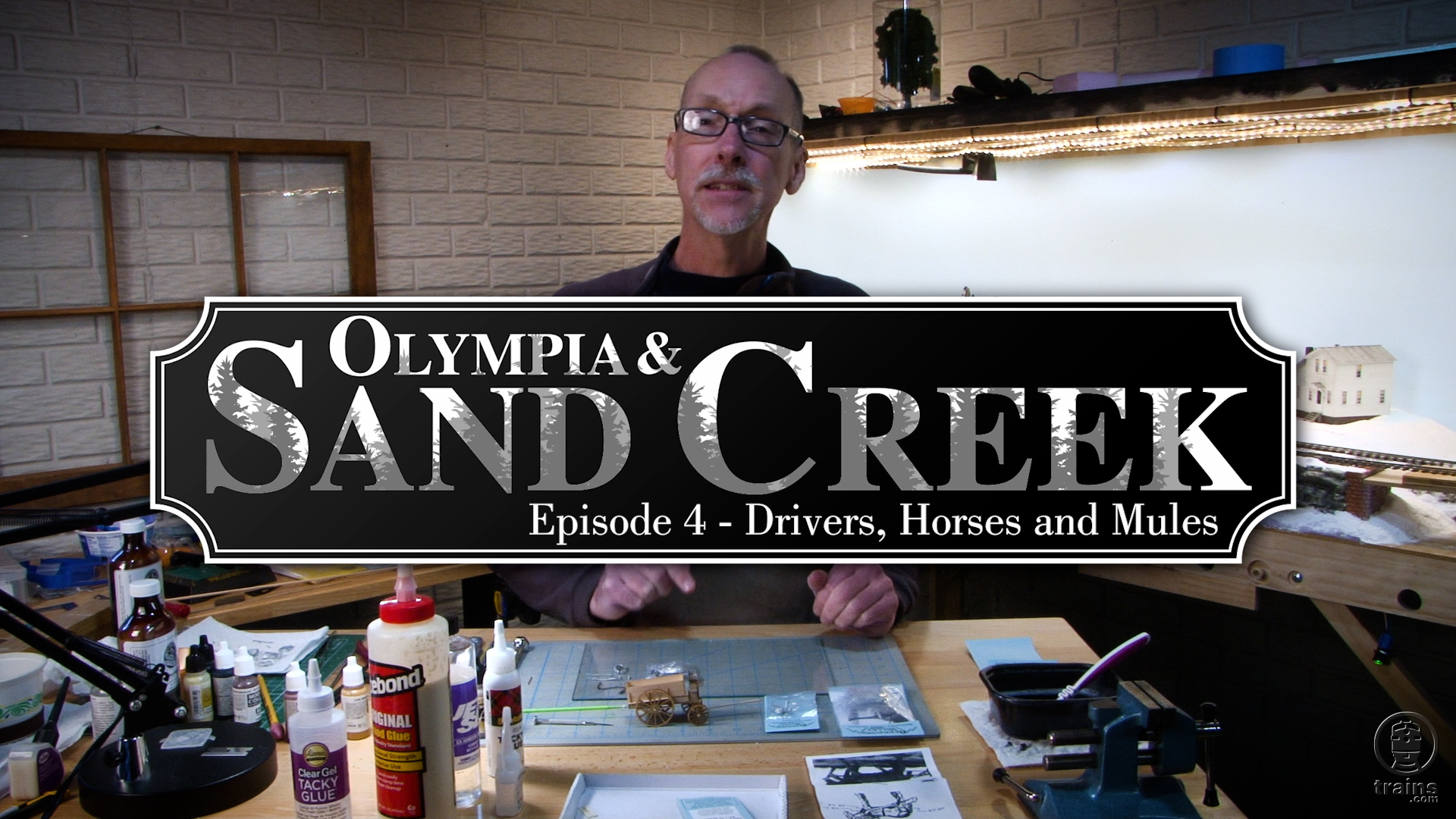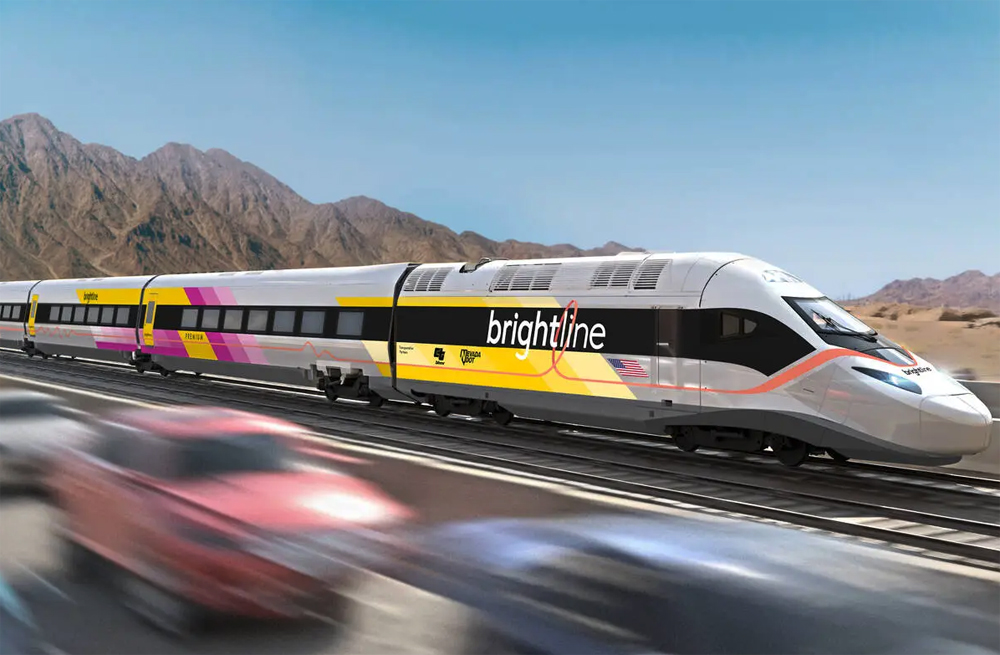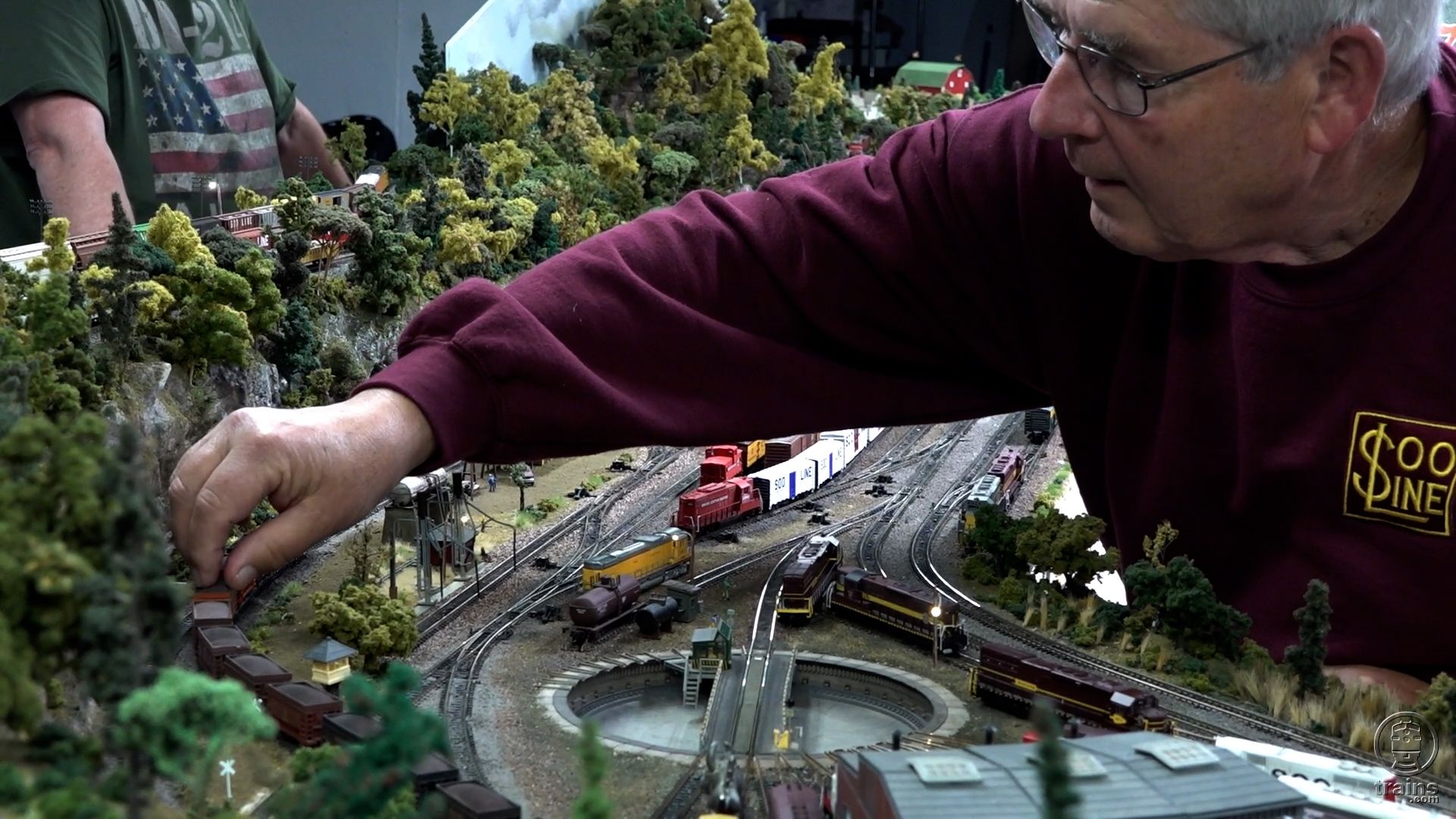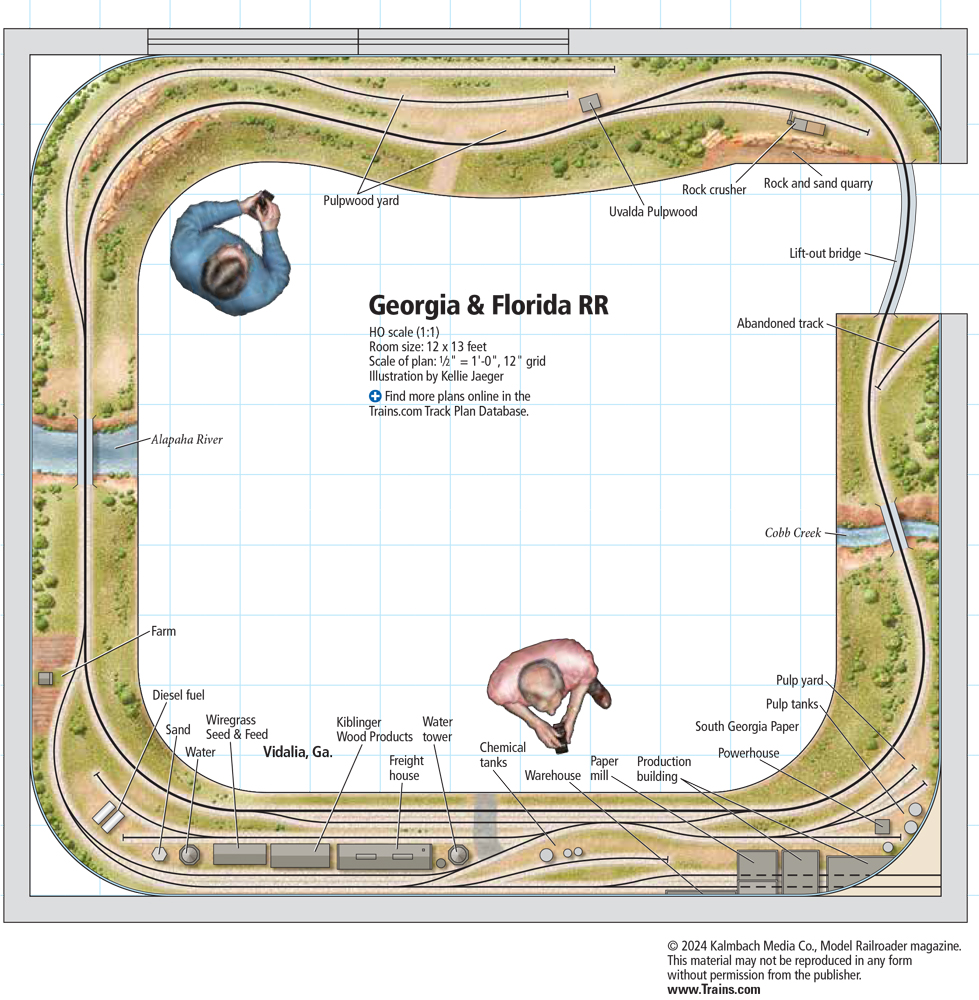Congratulations!
Whether you’ve been away from the hobby for several decades or are buying a starter set as a gift, you are in for some fun! Train sets have gone high-tech in the past few years but – fear not! – they still offer an easy, straightforward path to model train excitement.
The starter set’s roots go back to the beginning of the hobby. A starter set is an outfit designed to get someone launched in the hobby at a basic level. The set has all the material needed to get wheels turning. Generally, a starter set from 1954 is a kissing cousin of one from 2019. The trains may have changed, but they all have the same basic elements: track, a power supply, and a train to run.
First, all starter sets come with an instruction sheet or booklet. It will pay to read it before you begin. Here are a few thoughts before you get started.
Track is literally the foundation of the entire hobby. No track and you’re just pushing a train on the carpet! All starter sets come with a loop of track, normally curved sections with a few straight sections to make an oval rather than a circle.
The way the hobby has developed, the set you bought probably has a proprietary type of track with a plastic base and simple plug-in power connections. None of these track systems are directly compatible without using a transition section. But let’s keep this simple: Initially, stick with the track brand your set came with. If you buy a few sections of track and then shift to another brand, you won’t lose a fortune.
Power up
Starter sets will have a power supply (also known as a transformer). This has traditionally been a small box with a lever or dial control and some buttons for horn and bell activation. This is connected to the track to provide power and allow for direction/speed/horn/whistle activation.
You still need to connect the control box to the track. You do this by running wires to a special track section called a lockon section. This piece is the link to providing electricity to your whole layout. Don’t worry! Depending on your brand, either a connecting cord or wires with banana plugs will be included.
Sets like Lionel’s no. 82982 LionChief Christmas Express set, first cataloged in 2017, have a small “wall wart” box that plugs directly into a household 110-volt outlet and supplies a steady 18 volts to the track. A wireless handheld controller handles speed and sound controls.
Okay, so the track is set up and the power connected, what next? Get your train assembled!
A typical starter set has a locomotive (steam or diesel) and perhaps three or four cars for a freight train or maybe three for a passenger train. If your instruction sheet calls for lubricating your engine before running or at later intervals, a lubricant will normally be included.
Don’t forget that a little lubricant goes a long way. Never over-lubricate! The grease eventually travels downward to the rails, which in turn requires more frequent cleaning. Similarly, if your locomotive has a smoke unit, a sample-size tube of smoke fluid is normally included. Don’t overfill the smoke unit.
When placing the train on the track, be sure all the wheels are resting with the flanges inside the outer rail. The car couplers may be finger operated to open, but don’t forget to close the knuckle or you’ll leave the cars at the station.
Beneath the locomotive (or cars with lighting) you may find one or more sets of rollers. These are used to pick up electricity from the center rail. Be sure the rollers are on the rail. Should the train derail the metal wheels may hit the center rail and it will short the system. Just turn the power off, get the train back on track, and hit the power once more.
While putting a starter set together is fun, the point of it all is running that train!
The track that accompanies most sets has a fairly limited footprint and not much flexibility on how you connect it. Even so, don’t be tempted to rush right out and buy 50 sections of track to build your empire! Start slowly.
Buying modular track in quantity may be the most expensive thing you buy this side of a new locomotive, so advance cautiously. Four to eight more straight sections will give you a longer run and permit you to add cars to your set. Toss in a switch or two and you can have a siding for passenger or freight action.
I might go crazy and buy the same amount of track that came with the set, add a few straights, and have two main lines to operate trains in opposite directions. But remember, this is still in the realm of a modest ’round the Christmas tree type of setup.
So you can have fun right out of the box and put a little money into it for more fun with the same basic space.
But then you may get ambitious.
Track confusion
There is an astonishing (and confusing) variety of track available, and you may wish to “mix and match” brands.
For example, you may want to use an operating section for triggering a dump car, but it isn’t available in your track brand. You can transition to tubular track, insert a traditional activation section, and transition back to your preferred track.
Switches are the most expensive track sections you will encounter. Before you invest heavily, it pays to make wise choices. Make sure they match the look you are after and that your fleet can smoothly operate through them.
For rarely used sidings, a manual switch may be the economical choice. For sidings with frequent switching operations, a remote-controlled switch may be the answer. Be sure the remote switch you buy has a non-derailing feature that opens for a train running the opposite direction while the track diverges.
Track curve diameters vary. All manufacturers offer a variety of curved sections in differing diameters. They range from O-27 to O-72 and wider curvatures. Why are there wider curves? This is to allow for larger locomotives and rolling stock to look more realistic going through curves. The wider diameter also allows locomotives to run at higher speeds.
Longer locomotives may experience overhang or even derailment on curves that are too tight. Be sure you know what your maximum track curve is and what the minimum curve is for your locomotives and larger freight and passenger cars.
As you develop your track plan, you will probably run into spots where there are large gaps in the track. These require a fitter section. You can make a fitter using a modular track system, but cutting through the plastic base may be more trouble than creating a tubular transition section. Tubular track is easy to cut with gloves, a hacksaw, and a file.
No matter the brand, the transformer that came with the set will get you started railroading. The larger the layout you build, the number of items you have drawing power from the track and the transformer. You’ll need to upgrade.
A four- or five-car passenger train with one or two conventional bulbs in each car will drain power. You may see this in sluggish operation or dim car lights.
The longer the layout, the further the electricity has to flow. You may want to add extra lockon sections to even out power distribution.
The larger your layout becomes, the more you may want to consider more powerful transformers, notably the Lionel ZW or the MTH Z-4000. Both enable multiple-track operation and have accessory power hookups.
Command systems
You may encounter starter sets from three current train makers: Lionel, MTH, and Williams by Bachmann.
The Bachmann sets have conventionally controlled locomotives and are operated by a traditional power supply, where speed is manipulated with a dial or lever raising or lowering track power.
Lionel LionChief sets feature locomotives that operate at a steady 18 volts with the LionChief, TrainMaster, or Legacy command-control systems. Sets include a handheld remote control for the set’s LionChief locomotive. LionChief Plus sets do this as well and offer the additional feature of running with conventional variable-voltage transformer control.
All MTH starter sets come with locomotives that can be operated either conventionally or at 18 volts with the firm’s ProtoSound command system and a wireless remote DCS control system.
It’s up to you
Model railroading can be a great way for generations to interact or simply let you take a break from the stress of daily life. With the exceptions of a few basics like curve diameters and power supplies, there are hardly any rules.
Like one famous hamburger chain once said, you can truly do it your way. Spend as little or as much as you want, decorate as little or as completely as you’d like, and run the trains you favor. So, if you are new to the hobby or returning after a hiatus, the water is fine, jump right on in!





